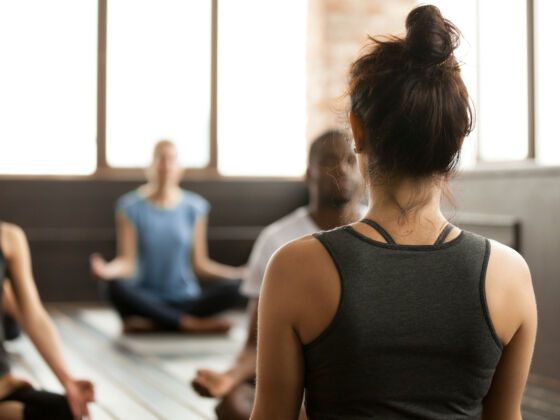I think it’s safe to say most people in the Western world know someone who struggles or who has struggled with substance abuse. In my modest 25 years, I’ve personally lost count of all the people who’ve come in and out of my life high as a kite on a regular basis. And two people from that group have deeply impacted my life, as I’ve been a close witness to their ongoing struggle. Although this problem is rampant in our population, there seems to be only one mainstream-encouraged road to recovery: the 12-step program.

According to Social Work Today, 12-step recovery programs, like the one created by Alcoholics Anonymous (AA), depend on the individual seeking outside help rather than focusing on making the change from within. Addicts are told to primarily depend on their sponsors, therapists, doctors, medications, and local meetings instead of their own minds. These programs also rely heavily on the belief in a higher power. In fact, the second step of the Alcoholics Anonymous program literally instructs us “to believe that a Power greater than ourselves could restore us to sanity.”
So where does that leave those who don’t want their recovery to depend on a “Higher Power” that’s totally outside of their body and may or may not even exist?
Laura Didyk, writer of the Kripalu column “Off the Mat”, tells us that “the Eastern perspective on addiction is that it’s not a separate ailment, but rather a condition on the continuum of human suffering.” What’s missing from the typical Western 12-step method is the mind and body connection.
Yoga and meditation, traditions that date back more than 5,000 years in the East, allow us to acknowledge this important inner relationship. They teach us to look within ourselves and realize we’re not “powerless” in the face of our addictions, as the first step of AA suggests. Which is why many forward-thinking doctors, psychologists, and social workers are finally starting to borrow a few lessons from the East and suggest that yoga be an important supplement to the Western 12-step methods we’ve come to so heavily depend on.
Norway is setting a clear example. Back in the Ring is a nonprofit organization in Oslo that gathers heroin addicts together to regularly practice Ashtanga, an extremely vigorous and regimented form of yoga. The participants practice for several hours a day, five times a week. They meditate, share meals together, are taught yogic philosophy, and spend off-days hiking, camping, volunteering, and working on local farms. After two months, the most dedicated individuals are sent to Mysore, India, to practice for four hours a day and work for six, building shelters for India’s homeless.
While Back in the Ring is funded by generous donations, many other organizations aren’t as lucky. Keeping in mind that the majority of addicts are most likely hard up for cash, the question definitely seems to be: How will an addict afford yoga, an activity that’s often associated with an upper-middle-class lifestyle?
As this innovative thinking catches on, there are resources popping up. Y12SR: Yoga for the 12-Step Recovery is a donation-based program created by Nikki Myers. Myers states on her website that although a suggested donation is about $8-$20, “no one is ever turned away. You are more important than your money.” Her program began in 2008 and is now taught all over the US.
Scientists believe that addicts abuse because they’re self-medicating. There’s something physical, mental, or even spiritual missing from their lives. So they use drugs and/or alcohol to make up for it. Yogis believe the mind and the body are not separate — if the body feels a loss, the mind feels that same loss. Yoga and meditation train the mind to recognize and accept these voids in our lives rather than try to fill them with hurtful addictions.
If you’ve ever attended a yoga class, you’ve been instructed to “breathe.” Just as breath is essential to life, it’s essential to yoga. Each time we do yoga, we’re problem solving — adjusting our asanas to better suit our bodies, learning how to make our breathing deep so it can carry us through discomfort, and even stopping completely if we realize we’re in pain.
Yoga as a form of substance-abuse treatment is a fairly new idea, especially in the US, where anything can be solved with enough medication and God. I support the 12-step method, as I know it’s been a lifesaver for many help-seeking addicts all over the world. But with more than 100,000 drug- and alcohol-related American deaths a year, can it really hurt us to challenge our Western thinking and incorporate something new?